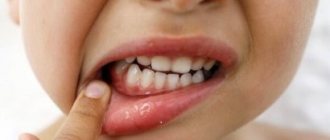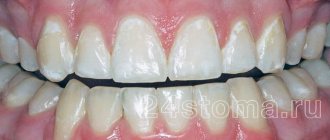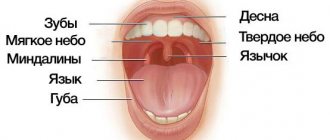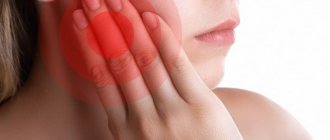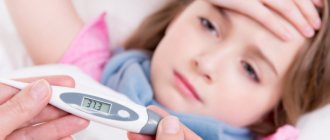Vitiligo (leukoderma) is a peculiar skin disease characterized by depigmentation, manifested in the form of light spots throughout the body, including the face. They appear due to the lack of melanin production. The disease can develop in people of any age, but the largest percentage affects children and adolescents. Vitiligo in children occurs with certain characteristics.
The disease itself is not contagious or dangerous, but it does bring some discomfort and cosmetic defects. This pathology is characterized by gradual development and a long course.
As the child gets older, the spots increase in size and take on different shapes. If foci of vitiligo are localized in open areas of the body, then under the influence of sunlight, dryness, thickening of the skin in the area of depigmentation, as well as peeling and redness may appear. It is worth noting that sun tanning causes spots to become more noticeable.
Treatment of vitiligo in children with Melagenin Plus lotion
Types of childhood vitiligo
Depending on where the foci of depigmentation are distributed, the following types of disease are distinguished:
Type A (Generalized appearance)
This type is characterized by a long course of the disease. Has the following forms:
- Acrofascial. It is characterized by damage to the distal parts of the limbs.
- Universal. Quite rare in children. Characterized by damage to a large area of skin (more than 80%).
- Mixed. Includes several subspecies; spots are localized over the entire surface of the body, including the head.
- Vulgar. Develops in two or more areas of the body.
Type B (Localized view)
The following forms are distinguished:
- Focal. Vitiligo spots are located only on one side of the body. This type of disease does not progress or spread.
- Zosteriform. It is characterized by a grouping of small lesions in one area of the body.
- Segmental. Depigmentation spreads along the location of large nerves and plexuses.
- Mucous. The spots are localized only on the mucous membranes, as well as on the genitals.
Atopic dermatitis and its differences from psoriasis
Atopic dermatitis may also cause dry patches to appear on the body. And as with psoriasis, they cause itching. Due to the increased sensitivity of the skin to environmental factors, the mechanisms of its self-regulation are disrupted, including the barrier function. That is, the trigger for atopic dermatitis is an allergy, but the tendency to such a skin reaction is genetically determined.
Most often, atopic dermatitis occurs in children. The disease has a chronic course, when exacerbations are replaced by periods of remission. Here are the typical signs of atopic dermatitis:
- dry skin;
- peeling and redness of the eyelids;
- dry flesh-colored plaques on the trunk and extensor areas of the body;
- cracks.
It is difficult for a person without medical education to distinguish psoriasis from atopic dermatitis, but a doctor can easily make a differential diagnosis. There are several differences that may speak in favor of one or another pathology. Atopic dermatitis most often affects children, psoriasis can debut in adulthood. Psoriatic plaques are raised above the skin, and scales can be seen. Dry spots in atopic dermatitis are flat. It is also important to consider the typical location.
Useful links: State Center of Urology in Moscow - Clinic of Urology named after R. M. Fronshtein of the First Moscow State Medical University named after I.M. Sechenov
Stages of childhood vitiligo
The disease in children has the same stages of development as in adults:
- Initial. First, one small spot appears, which may not increase in size for a long time and is a single spot.
- Progressive. It is characterized by the appearance of a large number of new spots over several weeks and an increase in the size of old ones.
- Repigmentation. This stage is diagnosed if no new foci of the disease have appeared for several months, and existing spots darken, do not grow, and in some places completely disappear.
Parents should know that vitiligo is prone to recurrence. If you manage to completely get rid of the signs of the disease, it may return after some time.
Main symptoms
In general, symptoms of vitiligo in children begin to appear by the age of 9-10 years. At the same time, the clinical manifestations of the disease in infants and older children may be different and develop depending on the general condition of the child. Initially they are small in size, round in shape and pinkish in color. As the child grows, the spots also increase in size, take the form of blots and become milky white.
As a rule, depigmentation does not cause pain. However, too much sun exposure can lead to dryness, irritation and sometimes itching. If a child scratches the spots, it can cause infection of the wounds, as well as their inflammation.
If leukoderma is localized on the scalp, then in these places the hair becomes discolored and turns gray. In this case, the affected areas are less responsive to cold or heat. The disease does not affect the internal organs and systems of the body.
Symptoms and signs
The first signs can be noticed from the first days of the baby. The peak of manifestation occurs on days 5-7. Hormonal rash looks different in infants. These are mostly red spots with a white head in the center. Pimples may have a yellowish or whitish tint, barely rising above the skin. The rashes are localized mainly on the forehead, nose, chin, ears, and chest area, but in more complex cases they can be on the back and other parts of the body. Closed comedones are few in number, appearing in the form of separate formations. They may merge into small spots. The important point is the absence of itching and pain. Hormonal rash in newborns is accompanied by a number of characteristic signs:
- swelling of the mammary glands in boys and girls;
- swelling of the scrotum area in boys;
- vulvovaginitis or spotting in girls.
When to see a doctor
Hormonal rash is not classified as a disease. It is inherently safe. It may go away in a few days, but not in all cases. It happens that it takes 1.5-2 or even 6 months to completely cleanse the skin of papules. Depending on the state of health, the rash may migrate and periodically worsen. How quickly and when the hormonal rash in infants goes away depends on the efficiency of self-removal of estrogens from the body. Parents should be alerted to the different external signs of a three-week rash, as well as the protracted healing period. Up to a maximum of 1 year, the child’s hormonal levels should return to normal, and all manifestations should disappear. It is necessary to contact a pediatrician or dermatologist at JSC “Medicine” (clinic of Academician Roitberg) in the Central Administrative District if the recovery period is exceeded. A rash due to hormonal imbalance in children over one year old is already equated to pathological conditions.
How to distinguish from allergies
Children have contact and food allergies. They can be identified by location and time of manifestation. Contact allergies occur on the skin only in those places where there was contact with the irritant. An example would be a diaper. In places of contact with its materials along the legs, in folds, on the buttocks, and lower back, rashes appear without clear boundaries. Red spots can merge into large areas of the lesion. Allergies are also characterized by a feeling of itching and, accordingly, anxiety in the child. This may be accompanied by a runny nose, conjunctivitis, moodiness, etc. Food allergies occur within 24 hours after consuming an allergenic product. It appears in the form of rough spots on the cheeks, reminiscent of an unhealthy blush. Hormonal rash in a child does not have such manifestations.
How to distinguish from infection
Measles, roseola, chickenpox, rubella, scarlet fever are diseases that are best dealt with in childhood. Each of them is characterized by a certain location of the rash, accompanied by specific symptoms. Hormonal acne has nothing in common with these diseases. It occurs without changes in body temperature, changes in appetite or sleep patterns. The infection covers a large area of the skin and can be localized in different places at the same time. Infectious rashes are characterized by the following:
- clear boundaries of lesions;
- the rash does not have the appearance of closed comedones (small wen);
- There is an increase in temperature and poor health.
Causes of leukoderma in children
It is known that there is a genetic predisposition to vitiligo. The following factors may also influence the development of the pathological process:
- Improper functioning of the immune system. The child's body perceives melanocytes as foreign cells and begins to produce antigens for them.
- Chronic pathologies.
- Aggravated infectious processes.
- Metabolic disorder.
- Lack of vitamins and microelements.
- Chemotherapy.
- The influence of medications.
- Intoxication of the body.
- Chemical burns.
- Autoimmune diseases.
- Helminthiasis.
Sometimes the appearance of leukoderma in children is associated with unstable hormonal levels or psychological trauma.
Treatment methods
Basically, the treatment of childhood vitiligo is aimed at restoring metabolism in the child’s body, since most often it is metabolic disorders that become the cause that affects the insufficient production of skin pigment. For treatment to bring positive results, it is advisable to use an integrated approach.
Symptomatic therapy
Its main goal is the maximum restoration of the lost pigment formation function. For this use:
- Local application of corticosteroids.
- Photosensitizing agents that restore normal pigmentation in affected areas of the body.
- In the case of a generalized type of disease, photochemotherapy is used.
- Herbal medicines.
- Ultraviolet treatment (its plus is safe for children over 3 years old)
To make the cosmetic defect less noticeable, skin whitening procedures are performed to reduce the contrast between healthy and depigmented skin.
Drug treatment
The following groups of medications are used for drug therapy:
- Glucocorticoids.
- Antioxidants.
- Immunomodulatory agents.
- Photosensitizing hormonal drugs.
- Multivitamin complex.
Surgery
The main methods of this treatment:
- Autoplasty (affected skin is replaced with healthy skin).
- Transplantation of own or donor melanocytes.
- Transplantation of cultured epidermis.
- Application of tissue genetic engineering.
Such actions are carried out only in extreme cases, since there is a high probability of rejection or suppuration of the transplanted tissue.
It is possible to cure leukoderma, but the final result will primarily be influenced by timely diagnosis of the disease and a well-chosen course of therapy.
White spots on the skin of children – vitiligo, pityriasis alba
Authors : Christophe HSU, Global Dermatology Information Portal
Typical causes of white spots on the skin of children are: 1) Pityriasis alba 2) Vitiligo
What is “Pityriasis alba”?
- Pityriasis alba is a mild form of dermatitis (skin inflammation).
- This condition is characterized by the appearance of numerous oval, slightly scaly, smooth, hypopigmented (white) patches on the face, arms, and upper torso.
- The boundaries of these spots are unclear.
- The disease occurs in children aged 3 to 16 years; about 30% of children at this age may be susceptible to this disease.
- The spots are not accompanied by itching.
- This disease is often mistaken for a fungal infection (mycosis).
- The condition tends to worsen with exposure to sunlight.
Treatment of pityriasis alba and preventive measures
- This disease is safe. It occurs in cases of hereditary predisposition or against the background of atopic dermatitis. The treatment essentially involves moisturizing the skin.
- The disease can last from several months to several years with a slow spontaneous recovery process.
- Sometimes steroid creams can improve the condition.
- Do not self-medicate.
- Avoid using antifungal creams.
- Limit the use of soap when washing your skin and use detergents that do not contain irritants.
What is vitiligo?
- Vitiligo is the loss of skin pigmentation in certain areas of the skin. These areas of skin appear as smooth white spots with clear contours. The hair in the area of vitiligo spots is often also white.
- There are two types of vitiligo:
- Type A: Vitiligo appears as numerous white patches, widespread and symmetrical. This type of vitiligo most often affects areas of the body such as the limbs, face and neck.
- Type B: Vitiligo appears as localized patches of segmental distribution. This type of vitiligo is most common among children.
- Vitiligo type A tends to spread to other areas of the skin, forming new lesions over time.
- Vitiligo type B tends to spread rapidly and then stop progressing after about one year.
- The causes of vitiligo are not fully known. Among people suffering from vitiligo, the most common cases are diabetes mellitus and thyroid disease.
How is vitiligo treated?
- Your doctor may prescribe one or more of the treatments listed below:
- Topical steroid creams. This method may promote skin repigmentation in some patients.
- PUVA (psoralen + ultraviolet A) is a combination treatment that involves using the drug Psoralen (P) and then exposing the skin to ultraviolet A (UVA). Psoralen can be applied to the skin as a lotion or taken orally in tablet form to increase the skin's sensitivity to ultraviolet rays. Patients undergoing PUVA treatment should be aware that the duration of therapy may be more than a year to achieve optimal results. It is best if this treatment is carried out under the supervision of a dermatologist.
- Concealing cosmetics. Using some cosmetics, you can choose a color that most closely matches your natural skin color. Concealing cosmetics are found to be effective in covering up white spots on the face and back of the hands.
- Sunscreens. Areas of skin affected by vitiligo are prone to sunburn. It is recommended to use sunscreen on affected areas exposed to sunlight.
- Response to treatment may vary across different affected areas of the skin and may vary between patients.
Source


